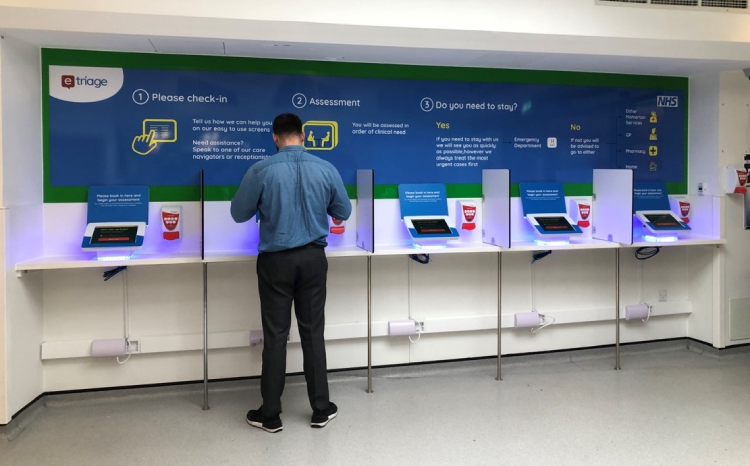It’s cold out there
- 5 November 2009
 |
|
Malcom Newbury |
Malcolm Newbury, a director of Integrating the Healthcare Enterprise UK, says it’s time to break out of Groundhog Day and find a new way of doing interoperability in the post NPfIT world. Also that visitors to E-Health Insider Live ’09 will be able to see the future on the IHE stand.
We are now well into the final third leg National Programme for IT in the NHS. We have a string of new services – from Choose and Book and the Summary Care Record to PACS – and we have a new leader in Christine Connelly, the first director general of health informatics and chief information officer at the Department of Health.
But despite all this, there are the same old rumblings about poor interoperability in healthcare and about NPfIT being to blame. Let’s face it, though, if you thought the national programme was going to solve all the integration problems of the NHS, you were living in cloud cuckoo land.
Even ten year programmes like NPfIT can only take a passing shot at these issues, because the nature of data sharing changes in accordance with the needs of healthcare practice and organisation.
Getting good interoperability between care settings has and always will be a ‘healthcare market responsibility’; one that needs ongoing focus and support from care providers, commissioners and vendors. Integrating the Healthcare Enterprise (IHE) is an international initiative which does just that and you can see it in action at e-Health Insider Live ‘09.
Interoperability issues are always with us
Earlier this year, the Royal College of Radiologists and British Institute of Radiology published papers that highlighted problems caused by poor information and image sharing within and between care settings.
In March, an NHS London study found that systems and data interoperability problems had a significant effect on unscheduled care workload, patient safety and the inability to work with social care.
Did I ever expect the national programme to resolve all these issues? Well, I suppose I had ‘high expectations’, but as my esteemed IHE colleague, Nick Brown, tells me: “If you walk into a restaurant and just order ‘a good meal’ you are asking to be disappointed.”
Those kinds of expectations are based on high hopes and assumptions, rather than hard evidence. To address the shortfall, the Department of Health is launching a new Interoperability ‘toolkit’ to give NHS trusts more access and flexibility when their Millennium or Lorenzo systems arrive for work alongside other applications. This should add significant value.
But if the national programme is not going to be our white knight champion of interoperability, who is? What else can be done? The problems won’t just go away, and they are likely to get worse as we try to integrate new systems to do things like remote dictation transcription, remote radiology reporting, telehealth and, in fact, anything new.
There is a solution
It is at this juncture that you have to reflect on the complexity and effort involved in achieving interoperable solutions like these. You need a service oriented architecture comprising things like an embedded master patient index, document registry, data repository, HL7 common object model, integration engine(s), BPEL workflow, portals and external web services using ebXML and SAML.
Some NHS trusts and equipment vendors will go down this route on their own, because they have the market power and know-how to get things done, but there are others who can’t afford the resources or skills to take on this kind of job. So are they destined to relive the same interoperability issues, over and over again?
Recent government and opposition party policies on health IT appear more cognisant of the underlying causes of interoperability problems – proprietary software versus open source, government data ownership versus personal ownership, bespoke procurement versus standards based procurement.
To illustrate, let me take you ‘back to the future’. In December 2002, I wrote a white paper with the slightly risky title ‘Reversing the seams of the inside-out organisations’. Yes, it was talking about the NHS and yes, I was proposing an approach to resolve the NHS’s interoperability problems. It offered two plans:
(A) The big programme solution: rip and replace everything with enterprise-wide compliant systems (held up as the ‘don’t press this button’ – nuclear option).
(B) A standards convergence solution: create a community of users and suppliers to define/refine desirable healthcare data and process standards and converge the vendor market to deliver these in a relatively painless, low-cost manner (I didn’t know about IHE at the time!)
Come and see the future
We are where we are. In three years time, the national programme will be complete, and it’ll be back to the day job. But are we really going back to the bad old days of 2002? Of course not!
NPfIT has already changed the interoperability landscape for good with more to come. Primary care systems now lead the world, allow us to exchange medical records electronically, choose clinics on referral, book appointments online, transfer prescriptions electronically and, in some areas, access our Summary Care Record for out-of-hours use.
However, in order to meet Lord Darzi’s new healthcare vision, I think that this is a good time to put in place plan (B). If you want to see plan (B) in action, come to stand C32 at E-Health Insider Live ’09 in Birmingham next week and see the IHE-UK demonstration of evidence-based interoperability.
About the author: Malcolm Newbury is a UK director of IHE, and a consulting director of Guildfoss, a company aimed at helping clients to monetise open source software.
As healthcare business development director for Sun Microsystems, he architected the company’s global healthcare open source strategy. And as healthcare practice director for SeeBeyond, he led its contribution to the Choose and Book programme at national and hospital levels.
|
E-Health Insider Live ’09 is the essential, two day exhibition and conference at The ICC in Birmingham. ore than 60 exhibitors are booked for the exhibition, which also features a free best practice showcase. The exciting conference programme, whose principal sponsor is BT, has four streams exploring “the big picture” on healthcare IM&T, benefits realisation, digital patient care and healthcare interoperability. And there’s no need to be stuck in your hotel overnight, because E-Health Insider has organised a great comedy night at Jongleurs, which should be a fantastic entertainment and networking opportunity. Register now. |





